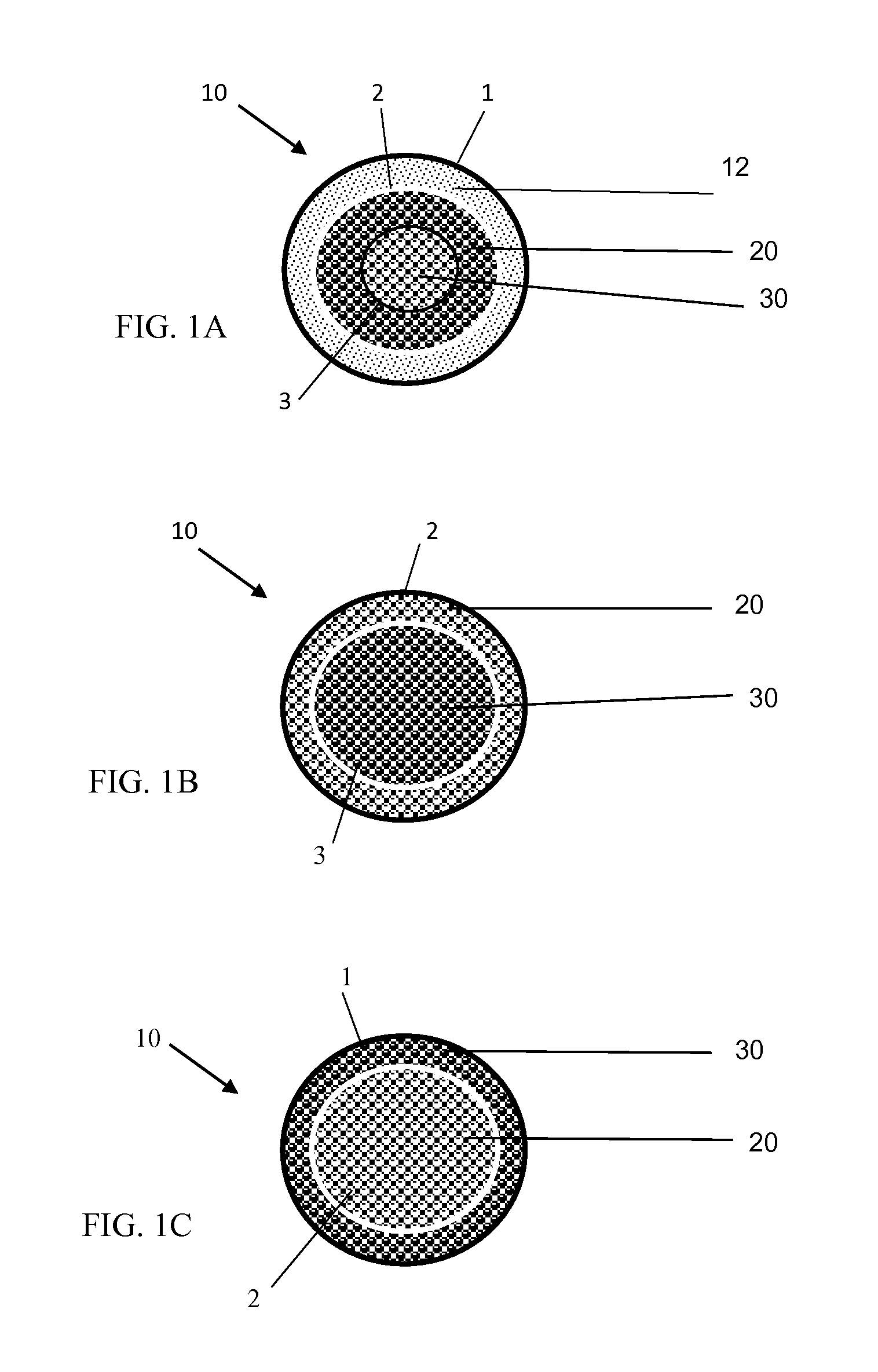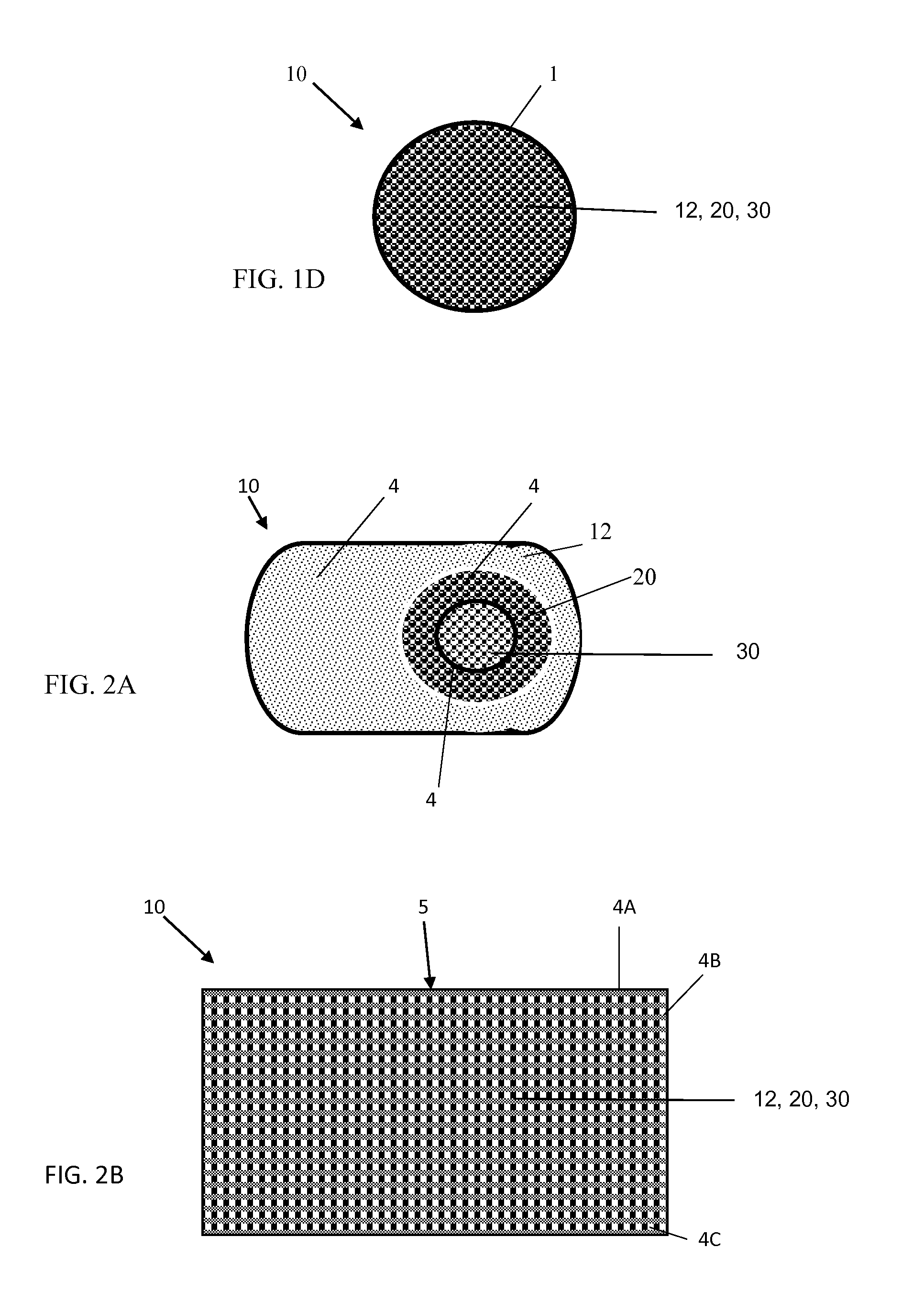Osteogenic regenerative scaffold matrix composition
a scaffold matrix and scaffold technology, applied in the field of implantable osteogenic regenerative scaffold matrix composition, can solve the problems of limited regeneration and many bone defects that cannot heal, and achieve the effect of promoting osteoblast attachmen
- Summary
- Abstract
- Description
- Claims
- Application Information
AI Technical Summary
Benefits of technology
Problems solved by technology
Method used
Image
Examples
Embodiment Construction
[0025]With reference to FIGS. 1A-1D, the implantable osteogenic regenerative scaffold matrix composition for replacing necrotic bone is configured and dimensioned for insertion and to revascularize bone defects. The implantable scaffold matrix composition can be provided in a variety of forms, one type of which is shown in FIGS. 1A-1D. In this form, the composition 10 has three main ingredients, a polymer material 12, a pharmaceutical composition 20 and an organic material 30. In these compositions as shown in FIG. 1A, the implantable matrix composition can have a biodegradable inert coating or polymeric coating that covers the outside of the composition similar to a shell (1). Interior of the outer shell (1) of biodegradable inert coating material or of the polymer material 12 is a next layer (2) composed of a pharmaceutical composition 20 that can have a coating of a polymeric material or be impregnated with a polymeric material, that includes a time release of osteogenic effector...
PUM
| Property | Measurement | Unit |
|---|---|---|
| Time | aaaaa | aaaaa |
| Time | aaaaa | aaaaa |
| Time | aaaaa | aaaaa |
Abstract
Description
Claims
Application Information
 Login to View More
Login to View More - R&D
- Intellectual Property
- Life Sciences
- Materials
- Tech Scout
- Unparalleled Data Quality
- Higher Quality Content
- 60% Fewer Hallucinations
Browse by: Latest US Patents, China's latest patents, Technical Efficacy Thesaurus, Application Domain, Technology Topic, Popular Technical Reports.
© 2025 PatSnap. All rights reserved.Legal|Privacy policy|Modern Slavery Act Transparency Statement|Sitemap|About US| Contact US: help@patsnap.com



